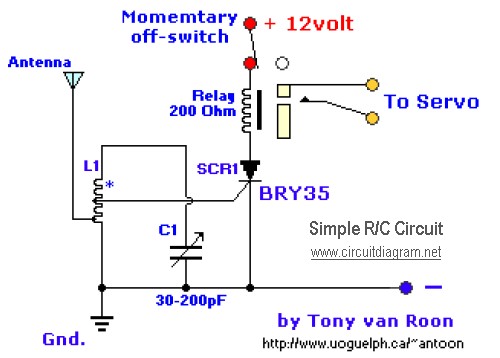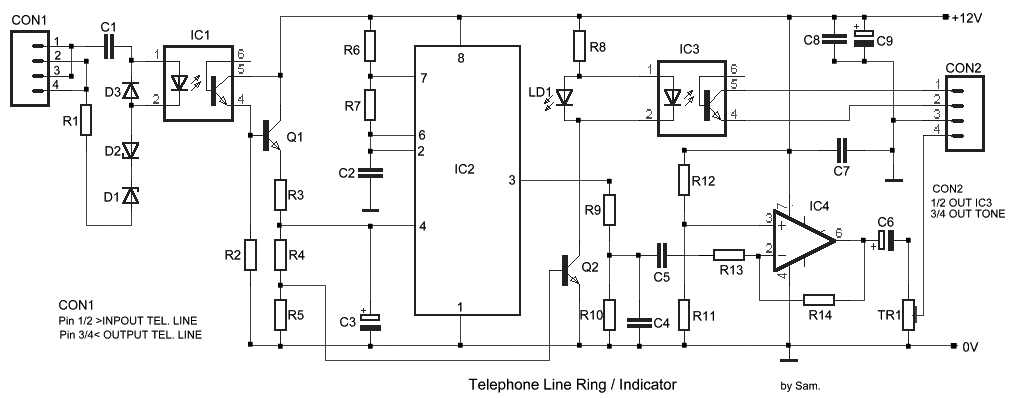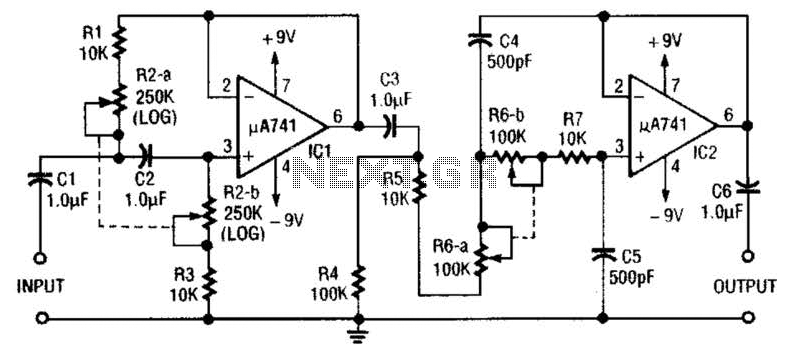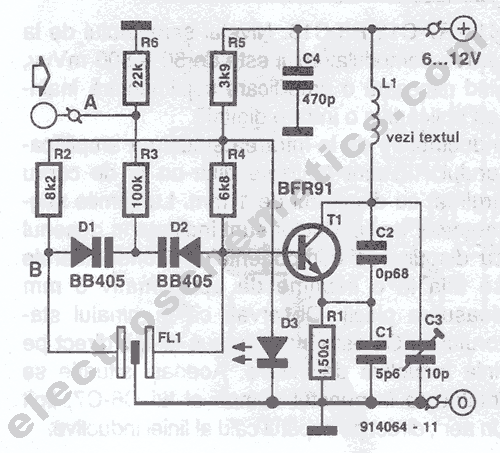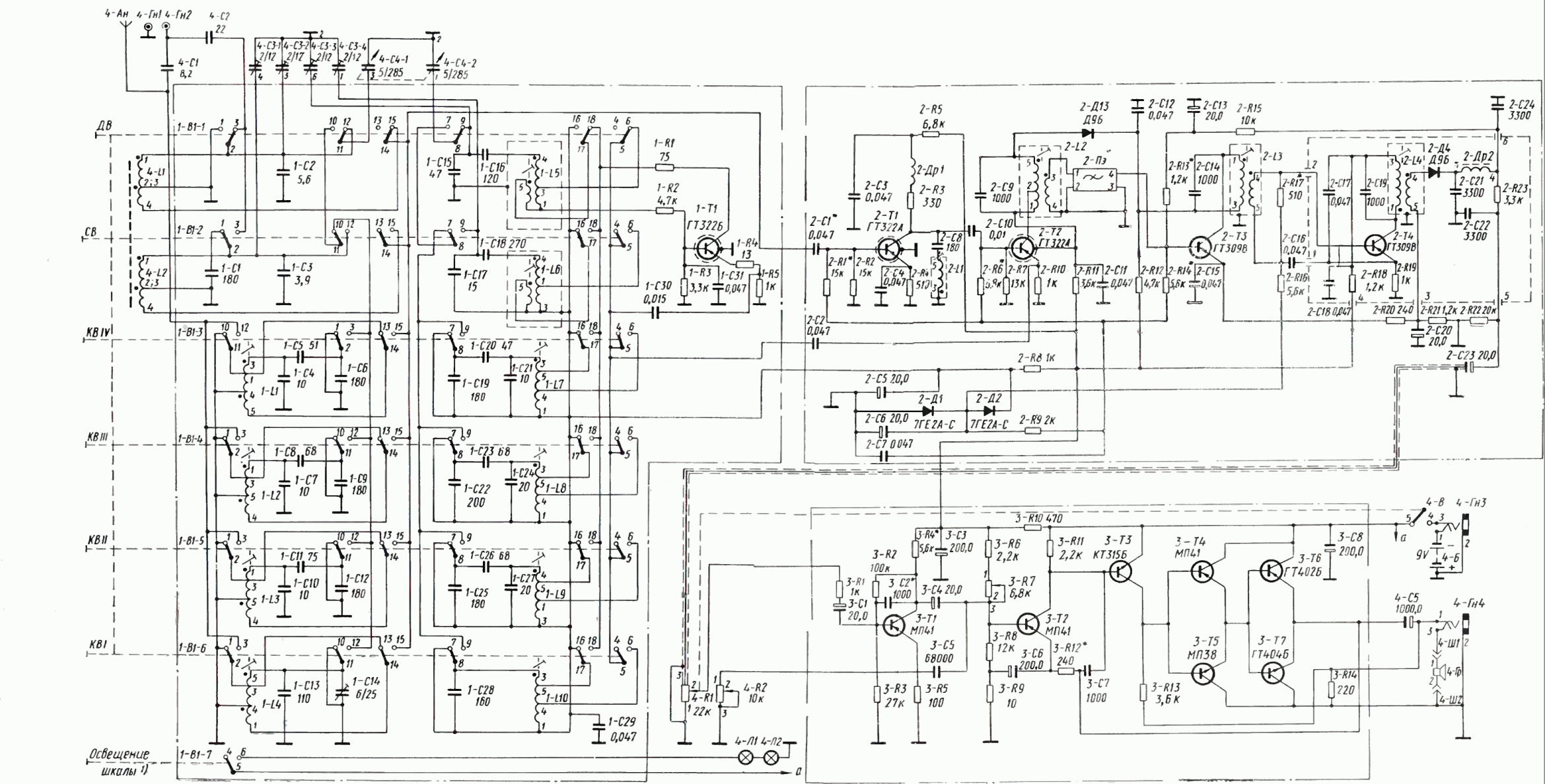
Blackout emergency lights circuit 4

FIG. 284 illustrates a practical emergency power lighting system that activates automatically in the event of a sudden power outage. The fluorescent lights serve as emergency lighting. If the primary illumination lamp is turned off due to a power failure, the standby lamp will remain inactive. The general lighting is provided by lamp E1, which, when switched off, causes the regulator tube VS2 to be in the off state. Consequently, transistor VT2, lacking base bias current, is also turned off, preventing relay K from activating, which results in contacts K1 remaining open, and fluorescent lamp E2 not lighting. When the electric power grid is operational, the stage switch S allows 220V AC to pass through the rectifier bridge VD2-V1, supplying power to the entire lamp F1, thus energizing E1 positively. E1 receives voltage through resistor R, which limits current and feeds the regulator VS2, while the DC output voltage is managed by resistor R7. A symbol for PNP transistor VT2 is added, ensuring it remains reverse biased and off, preventing relay action. Meanwhile, transformer T1, configured as a buck converter, and rectifier VS1 form a battery charging circuit for capacitor C. In the event of a sudden power failure, the output from VT1 ceases, halting the charging current. The stored charge discharges quickly through R, E1, and switch S, forming a discharge circuit that rapidly turns on VT2, energizing relay K and closing contacts K1. This action powers a three-point oscillator driven by VT3, which operates at an oscillation frequency of approximately 100 kHz. The oscillating current boosts the voltage for fluorescent lamp E2, providing emergency lighting. The system utilizes a 8050 power transistor for VT1, with diodes Vl and V2 rated for 9V 15A. Transistors VT3 can be of type 3DD12A or 3DD15A, suitable for low-frequency high-power applications, with a recommended installation on a 70mm x 40mm aluminum heatsink. The transformer T1 should have a rating of 22V, 6.3V, and 5VA, ensuring long-term power and heat management. The ferrite core for the inductor should be 22mm in diameter, with high-strength enameled wire wound around a skeleton for optimal performance. Insulation paper should be used between inductors L and Lv to prevent breakdown and ignition during operation, with varnish applied for added protection. The relay JZC-22F operates on DC6V, while E2 can utilize 8W fluorescent tubes and a maintenance-free 6V, 4Ah phthalocyanine battery. The inductance of the three-point oscillator may require adjustment, allowing for brightness control of the fluorescent tube E2. If the lamp fails to illuminate, the circuit may not oscillate due to incorrect coil wiring, which can be corrected by swapping the connections of the two threads.FIG. 284 is a practical power emergency lights, which is characterized only when lights turn on in case of a sudden stop electricity. Fluorescent lights will alternate power fo r emergency lighting. If the illumination lamp is turned off power failure, the standby lamp will not light. Figure, E] is general lighting lamps, s lighting Ji Ge, when playing the J s, E1 is off, then the regulator tube VS2 is in the off state, VT2 ashamed because there is no base bias current is turned off, the relay K is not action, it make contacts k 1 to open, VT3 little work, E2 fluorescent lamp does not light. If the electric power grid, the stage switch S, 220V AC via VD2-V1) 5 rectifier bridge crossing the whole lamp F1 to power, it can be forwarded El positive light.
E1 also by the voltage across R, step-down current limiting and VS2 regulator, the DC output voltage by R. 7 SV Was added to a symbol VT2 PNP base, so its reverse bias is turned off, the relay is still action.
Meanwhile, AC transformer T] Yoshitsune Buck, Vn1 rectifier Simple constant pressure and composition of the VS1 and VT1 to the battery charging circuit C is charged. If at this time a sudden power failure, stop the output VT1 off the charging current, and c. The stored charge through R, E1 and S discharge quickly, this time (can through Vl, 2 emitter, R, R., El and S constituting the discharge circuit, so quickly make VT2 conduction, the relay K was electric suction units, contact k 1 is closed, the inductor three-point oscillator powered by the VT3 composed of start-up, the oscillation frequency of about iookHz, this oscillating current after T2 fluorescent lamp E2 rapidly boost electric lights, for emergency according to Ming, VT1 to 8050 Journal of power silicon tube, mouth 100; Vl, 2 with 9 () 15 criminal silicon tube to seek mouth OO: VT3 available 3DD12A, 3DD15A type silicon and other low-frequency high-power tube, should gizzards 25.
installation for installation 70nun 40mm mm aluminum cooling plate .Tl of 22 () V, 6 3V, 5VA small, high quality power transformers, requiring long power/heat .r2 need white system: the use of ferrite O 22mm in diameter Hugh magnetic tank, L. O In.m with high strength enameled wire wound on the skeleton level 9 turns/, with O 3mni enameled high strength at around 8 L.
outer flat turns, L. with 40. 2rnm l Island strength enameled wire skeleton chaos around 200 turns. in between L. and L. v should be less padded insulation paper (paper with desirable} U insulating paper container) breakdown prevent the occurrence of ignition phenomena in use and dip varnish at the processing, to be painted through the rear opening T .K state officials with JZC-22F, DC6V power in a small electromagnetic relay .E2 can use 8w fluorescent tubes .G as 6V, 4Ah battery maintenance-free phthalocyanine. inductance three-point oscillator is required to be adjusted, Dong RP can change the brightness of the light emitting tube E2 discretion if the lamp.
disobedient does not shine, the circuit can not oscillate cho coil r. or /: two-thread reversed as long as I. of. two thread swap about to bite to r,
E1 also by the voltage across R, step-down current limiting and VS2 regulator, the DC output voltage by R. 7 SV Was added to a symbol VT2 PNP base, so its reverse bias is turned off, the relay is still action.
Meanwhile, AC transformer T] Yoshitsune Buck, Vn1 rectifier Simple constant pressure and composition of the VS1 and VT1 to the battery charging circuit C is charged. If at this time a sudden power failure, stop the output VT1 off the charging current, and c. The stored charge through R, E1 and S discharge quickly, this time (can through Vl, 2 emitter, R, R., El and S constituting the discharge circuit, so quickly make VT2 conduction, the relay K was electric suction units, contact k 1 is closed, the inductor three-point oscillator powered by the VT3 composed of start-up, the oscillation frequency of about iookHz, this oscillating current after T2 fluorescent lamp E2 rapidly boost electric lights, for emergency according to Ming, VT1 to 8050 Journal of power silicon tube, mouth 100; Vl, 2 with 9 () 15 criminal silicon tube to seek mouth OO: VT3 available 3DD12A, 3DD15A type silicon and other low-frequency high-power tube, should gizzards 25.
installation for installation 70nun 40mm mm aluminum cooling plate .Tl of 22 () V, 6 3V, 5VA small, high quality power transformers, requiring long power/heat .r2 need white system: the use of ferrite O 22mm in diameter Hugh magnetic tank, L. O In.m with high strength enameled wire wound on the skeleton level 9 turns/, with O 3mni enameled high strength at around 8 L.
outer flat turns, L. with 40. 2rnm l Island strength enameled wire skeleton chaos around 200 turns. in between L. and L. v should be less padded insulation paper (paper with desirable} U insulating paper container) breakdown prevent the occurrence of ignition phenomena in use and dip varnish at the processing, to be painted through the rear opening T .K state officials with JZC-22F, DC6V power in a small electromagnetic relay .E2 can use 8w fluorescent tubes .G as 6V, 4Ah battery maintenance-free phthalocyanine. inductance three-point oscillator is required to be adjusted, Dong RP can change the brightness of the light emitting tube E2 discretion if the lamp.
disobedient does not shine, the circuit can not oscillate cho coil r. or /: two-thread reversed as long as I. of. two thread swap about to bite to r,
